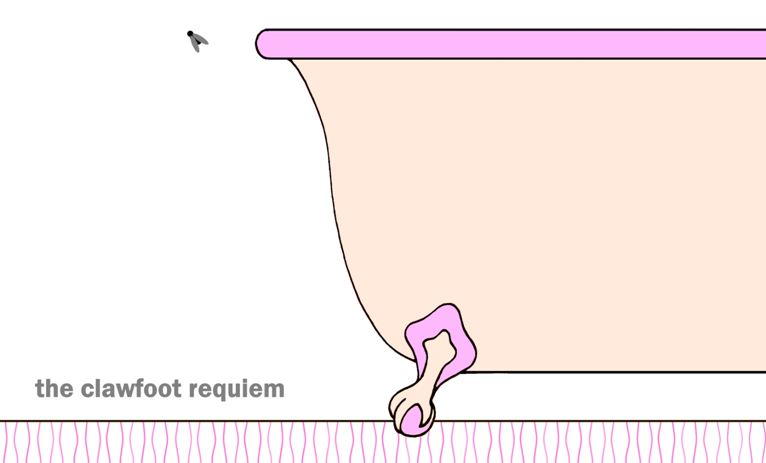This month, my short story, “The Clawfoot Requiem,” made its debut in the March issue of LampLight. The horror tale follows Sabrina, a woman mourning the suicide of her sister. But instead of the usual black garb and graveyard wreaths, she copes by building a shrine to the blood-filled bathtub where her sister died. Gruesome and wistful, all wrapped into one clawfooted package.
Being a horror author, death is a huge part of the job. Not every story I write features mortality at the forefront, but it often sneaks in one way or another. Everything from the threat of dying to coping with loss after the fact is fodder for genre writers.
For me, mourning rituals in particular have always held an especially macabre appeal. Growing up, it seemed like we were attending a family funeral every other month. I quickly learned to hate what I considered the barbaric custom of calling hours. Staring at the embalmed faces of deceased loved ones in coffins became such an abhorrent pastime that by age nine, I lodged a formal complaint with my parents, begging to be released from the funeral parlor circuit. Because they knew how important it was to me, they honored my request, and I didn’t attend another funeral for a full decade.
However, being a bizarrely curious child, my funerary fascination didn’t end there. I started researching why we mourn the way we do. In a truly morbid pre-internet montage, I amassed book after book, some with round-ups of mourning customs, some with Victorian death pictures that haunted me long after the book retired to a shelf. Yes, while other girls my age read teeny bopper magazines, I learned about death rituals. All in a day’s work for a girl who earned the nickname “Gwensday Addams” before entering the second grade.

Flash forward two decades later, and my research never ends. There’s always another custom to learn. Last year, on International Vulture Awareness Day, I went to the National Aviary in Pittsburgh. The Aviary’s all-day event spotlighted the crisis of Asian vultures that are perishing in mass numbers thanks to an anti-inflammatory drug administered to cows. This mass vulture die-off has affected everyone in the area, dramatically increasing the rate of rabies throughout India. It has also impacted groups like the Zoroastrians who can no longer complete a venerated tradition of placing their deceased on top of a dakhma, an elevated structure designed to draw in scavenger birds.
This is where mourning gets really interesting and nuanced. For the Zoroastrians, it’s horrifying when a vulture doesn’t arrive to eat Grandma. But to us Westerners, the notion of leaving anyone—even a complete stranger—out for carrion seekers is more than a little disturbing.
So while keeping a bathtub brimming with blood isn’t exactly in the textbooks as normal, who decides what is normal anyhow? From anthropological and sociological perspectives, it’s a synergy of time and place. Today’s mourning practices could look ghoulish a hundred years from now. By that rationale, my character Sabrina in “The Clawfoot Requiem” might just be a woman ahead of her time.
Has all this creepy talk piqued your interest in a scary story? Check out “The Clawfoot Requiem” and four other unnerving tales in the latest issue of LampLight. Horror lovers won’t be disappointed.
Happy reading!

